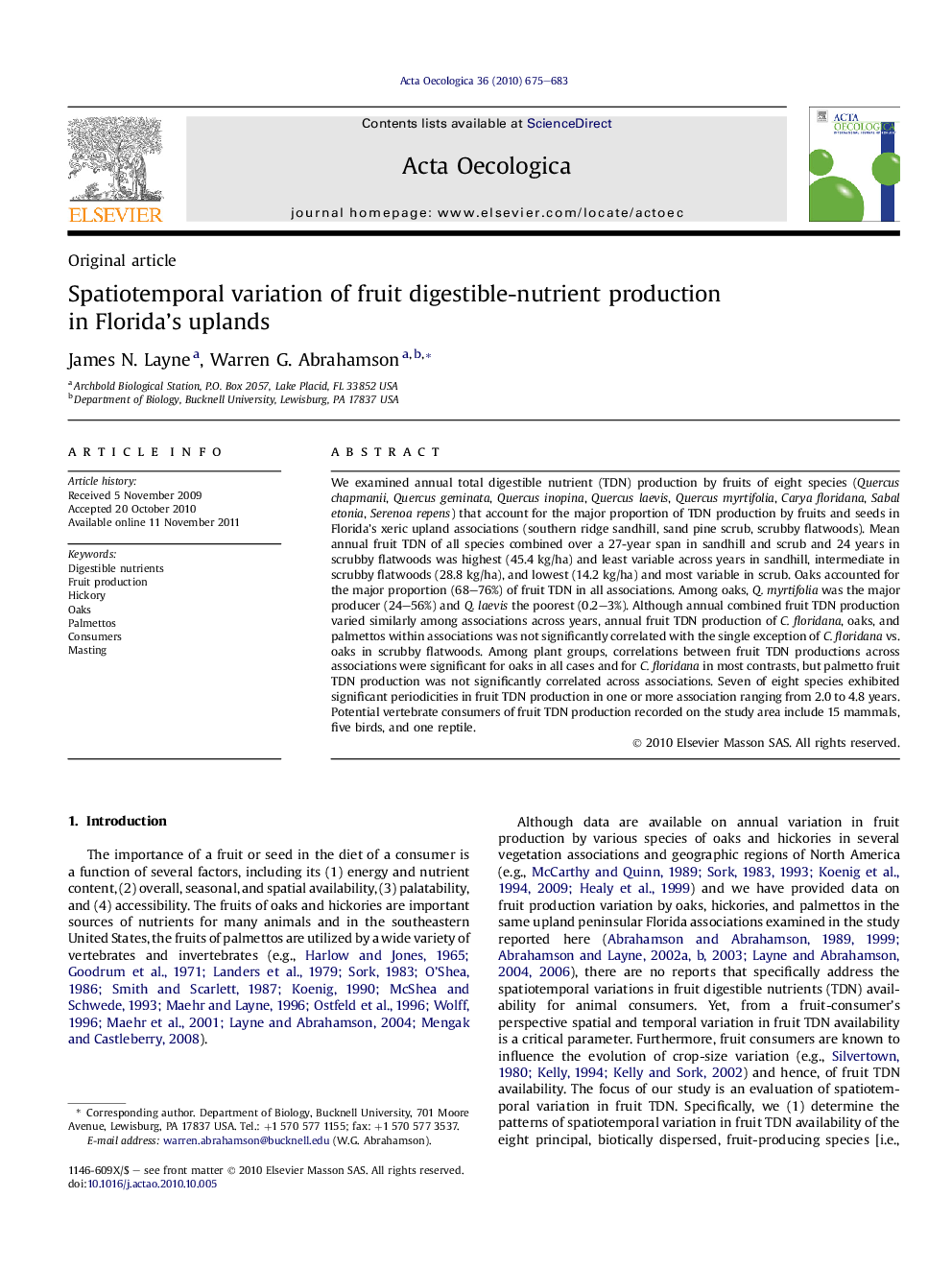| Article ID | Journal | Published Year | Pages | File Type |
|---|---|---|---|---|
| 4380973 | Acta Oecologica | 2010 | 9 Pages |
Abstract
We examined annual total digestible nutrient (TDN) production by fruits of eight species (Quercus chapmanii, Quercus geminata, Quercus inopina, Quercus laevis, Quercus myrtifolia, Carya floridana, Sabal etonia, Serenoa repens) that account for the major proportion of TDN production by fruits and seeds in Florida's xeric upland associations (southern ridge sandhill, sand pine scrub, scrubby flatwoods). Mean annual fruit TDN of all species combined over a 27-year span in sandhill and scrub and 24 years in scrubby flatwoods was highest (45.4Â kg/ha) and least variable across years in sandhill, intermediate in scrubby flatwoods (28.8Â kg/ha), and lowest (14.2Â kg/ha) and most variable in scrub. Oaks accounted for the major proportion (68-76%) of fruit TDN in all associations. Among oaks, Q. myrtifolia was the major producer (24-56%) and Q. laevis the poorest (0.2-3%). Although annual combined fruit TDN production varied similarly among associations across years, annual fruit TDN production of C. floridana, oaks, and palmettos within associations was not significantly correlated with the single exception of C. floridana vs. oaks in scrubby flatwoods. Among plant groups, correlations between fruit TDN productions across associations were significant for oaks in all cases and for C. floridana in most contrasts, but palmetto fruit TDN production was not significantly correlated across associations. Seven of eight species exhibited significant periodicities in fruit TDN production in one or more association ranging from 2.0 to 4.8 years. Potential vertebrate consumers of fruit TDN production recorded on the study area include 15 mammals, five birds, and one reptile.
Keywords
Related Topics
Life Sciences
Agricultural and Biological Sciences
Ecology, Evolution, Behavior and Systematics
Authors
James N. Layne, Warren G. Abrahamson,
